Maria Lima's Blog, page 14
August 25, 2011
Summer of Discovery: It's Been Fun!
The Summer of Discovery series is over and it was a blast!!
Thanks to every single one of my guest authors for thought-provoking, humorous and interesting posts. Thanks to all the participants for playing along.
What's next?
The Blood Sacrifice Blog Tour, of course!
I'm over at Suzanne McLeod's blog, talking about the strange trip to publication.
Later today, I'll be guesting at Deadline Dames as their Dame for a Day.
The tour continues over the weekend and into next week.
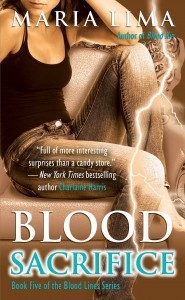 BLOOD SACRIFICE BOOK LAUNCH
BLOOD SACRIFICE BOOK LAUNCH
The book drops next Tuesday, August 30, 2011! On Wednesday, August 31, I'll be launching it at the Duncan Public library where I'm doing an author talk.
Author Talk 7:30 p.m.
James M. Duncan Branch Library
2501 Commonwealth Avenue
Alexandria, VA 22301
And then what?
My next project is recording the audiobooks for the series. The books will be available via Audible.com thanks to Wildside Press. I'm just getting started, so I don't have any information on release dates yet, but stay tuned!
Blood Sacrifice is the end of the Blood Lines series via Pocket Books. It's been a great and wonderful ride, but it's time to move along. Nothing definite is in the works for additional books or stories in the series, but I am tossing about a few ideas. For those of you who know the series and my penchant for cliffhanger endings, I PROMISE that this book wraps up all the storylines. I'd already planned this to be the final book of the story arc, so it worked out. 
I am working on a collaborative project that is not yet ready for either prime time or announcing. Again, more on that later.
Hoping that all you guys are safe from Irene, etc. I'm pretty DONE with weather events. Last night's (1 a.m.) 4.5 aftershock from the earthquake was more than enough for me. We're all battening down hatches and praying really hard that Irene veers further eastward.
TTFN!
August 18, 2011
Summer of Discovery: Torturing Your Heroine
Welcome to fellow Juno imprint author, Laura Bickle, who regales us today how she learned to torture her protagonist.
 Laura Bickle (a.k.a. Alayna Williams) has worked in the unholy trinity of politics, criminology, and technology for several years. She lives in the Midwestern U.S. with her chief muse, owned by four mostly-reformed feral cats. Writing as Laura Bickle, she's the author of EMBERS and SPARKS for Pocket – Juno Books. Writing as Alayna Williams, she's the author of DARK ORACLE and ROGUE ORACLE. More info on her urban fantasy and general nerdiness at her website.
Laura Bickle (a.k.a. Alayna Williams) has worked in the unholy trinity of politics, criminology, and technology for several years. She lives in the Midwestern U.S. with her chief muse, owned by four mostly-reformed feral cats. Writing as Laura Bickle, she's the author of EMBERS and SPARKS for Pocket – Juno Books. Writing as Alayna Williams, she's the author of DARK ORACLE and ROGUE ORACLE. More info on her urban fantasy and general nerdiness at her website.
****
As writers, we're told to "murder our darlings." Don't get too attached to any part of the manuscript, and be willing to do the tough work of cutting things that we love that don't work. Be brutal.
A corollary of that rule is to be willing to torture your protagonist.
It's tough stuff. We lovingly craft a protagonist who speaks to us. We give her strengths and weapons. We want to see her succeed,. We want her to answer the call to adventure, follow the Hero's Journey, and return to the village with the elixir. We want the reader to root for her, just as much as we do.
But we can't be gentle with our heroines. We can't make it easy. It's all to tempting to create a protagonist with few flaws, who's virtuous and always makes the right decisions. If we really love our heroine, it's also tempting to lob softball dilemmas at her, easy choices with few ramifications. We want her to follow the path of all that's right and good, and we can fall into the trap of paving that road to the quest with golden bricks. We want to shelter her, make sure that her nicely-coiffed hair stays dry and her armor all spit-shiny.
A perfect heroine does not grow. Decisions and missions that are too easy will not challenge her. Or the reader.
To be certain, we want our protagonist to have the tools she needs to succeed: a power, a weapon, pluck, strength. But she needs to bear some flaws. Be human. Make mistakes. Learn from them. In Joseph Campbell's Hero's Journey, the hero is called to adventure. And the hero often refuses the call. The hero may fall into the arms of temptation. Atone for past sins.
And our protagonist must face monsters, inner conflicts and external obstacles. Campbell calls this the "Road of Trials." It's common in myth for the heroine to fail. And that's what can make writers uncomfortable.
Why would we want our protagonist to fail? Why would we want her to be weak, to suffer, to fall under the sway of temptation or to be ground under the heel of the enemy? Why knock her down? Why keep shoving her to the mud?
Because we want her to get back up. Because we want her to realize who she is…we want her to become something more than we imagined or created.
We want her to have a life of her own. 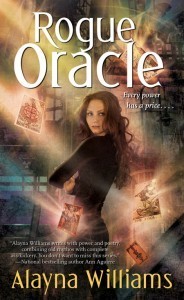
When a protagonist becomes autonomous in our heads, we know it. We lose control of her. She strides into situations, and we cannot predict the outcome. We can't tell her what to do, or expect her to conform to expectations. She may slay the dragon or shack up with it. She may take that shiny sword we gave her and use it to cut off the luxurious hair we gave her. She may tell Prince Charming to go screw himself and take up with his slightly dorky footman.
When this happens, our heroine has become a creation in her own right. She may be bedraggled, muddy, and pissed off. But she'll smile back at us, for giving her a fictional life of her own, to be ruled by her own choices…like a real person, who's been through trials. She's made mistakes.
But they are all her own.
And seeing her smile back at you, whole and multidimensional, is worth it.
***
Thanks, Laura!!
Readers, what challenges do you like to see protagonists undergo? When does an author go too far? When it is not far enough? Comment below by Wednesday, August 24, 2011 to win a copy of Sparks, the 2nd book in Laura's great series!
August 11, 2011
Summer of Discovery: Anything Can Happen
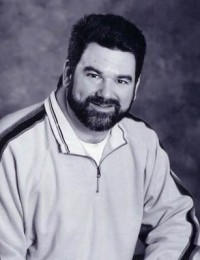 I first "met" Christopher "Chris" Golden in the tiny horror section of the Bailey's Crossroads Borders bookstore in Alexandria, VA.
I first "met" Christopher "Chris" Golden in the tiny horror section of the Bailey's Crossroads Borders bookstore in Alexandria, VA.
Back before urban fantasy was cool, the only place I could find books that intrigued me was in horror or young adult. I stumbled across this awesome title: Of Saints and Shadows. And hey, look, there were two other books in the series!
In a very short while and through various mutual contacts, Chris and I have become friends and colleagues. He's a great guy and a brilliant writer. I'm glad to know him & to have had the opportunity to meet him in person.
Welcome, Chris!
***
What pleasure in life is greater than discovery? Think about it for a minute. Really.
The moment when you realize that an acquaintance has become a friend or that, sometimes out of the blue, you are falling in love. The hole-in-the-wall restaurant that surprises you with its quality. The unfamiliar song that comes on the radio that makes you pause and turn it up, and want to hear more. The stopover at a place that is not your destination, but to which you realize you must one day return. Beauty in all of its unexpected places.
Years ago, my wife and I were attending a Bonnie Raitt concert in Boston. The opening act was a guy I'd never heard of prior to that night—Keb Mo—and he blew me away. Once upon a time, during a Mediterranean cruise, we found ourselves on a small boat that ran passengers from the cruise ship to the docks of Dubrovnik, Croatia. From the water, the white walls of Dubrovnik captivated me; it looked more like Minas Tirith from Lord of the Rings than any earthly city. The city had been pummeled by war not terribly many years before, and yet it was beautiful and clean and its people were friendly and welcoming. Though the cruise took us to many better known destinations, Dubrovnik was my favorite. It was our discovery.
Of course, not all discoveries are pleasant. Some are…terrible.
In February of last year, my eldest son was diagnosed with Non-Hodgkin's Lymphoma. I'll never forget that phone call. I was home alone when the doctor called with the news, and I had to break it to my wife when she returned…and then to our children, beginning with Nick, as the news was his. I couldn't tell my wife over the phone. I called my brother, but I could barely get the words out. I could barely breathe. All I could think…or say…was "What if he dies?"
The oncologist we went to see at the local hospital told us that Nick's kind of lymphoma developed slowly, which sounded good until she explained that because of this, chemotherapy would only offer a temporary respite…that he would likely have to have chemo every two or three years for the rest of his life. Then she told us that she figured he had ten to fifteen years to live.
This was days before his sixteenth birthday.
Yeah.
Thing is…she was wrong. They were all wrong. We had our suspicions right from the start. I won't bore you with the details of the worst weeks of my life. Suffice to say that almost a month later, I received another phone call—this time from the amazing people at the Jimmy Fund Clinic in Boston.
Nick didn't have cancer. At all.
Yeah. You can imagine.
This all really happened. If I wrote it out in detail, put it in a book or a tv or movie script, a large part of the audience would think this is such bullshit. What a cop out. You don't get that kind of happy twist to a story that dark.
But the thing is, sometimes you do.
Anything can happen. Anything.
That was the greatest discovery of my life—both in the sense that I learned my son would be all right and that I truly understood that our fortunes can take turns that are literally the worst imaginable, or the best. That discovery has affected me in many ways, of course.
Creatively, the belief that anything can happen has definitely informed my work and allowed me to give my imagination freer rein. The process began years ago while writing Strangewood, a novel that was a sort of epiphany for me, and continued in many other works. While working on The Myth Hunters and its two sequels (the Veil trilogy), I opened myself to the idea that characters could sometimes grow so strong in the mind of the author that they seem to determine their own fate. It's a natural instinct to want to rein in those characters—or the subconscious creative instincts that they represent—but the best part of writing, for me, is in allowing the story and the characters to break free from my own expectations. In The Myth Hunters, the character of Kitsune was not in my plot or outline at all. When I began to write about a mysterious presence shadowing the main characters through the woods, I had no idea who or what that presence might be…not until the moment she first makes herself known to them, which was, of course, the same moment that she made herself known to me. She wasn't what I planned, but she was what I, and the story, needed.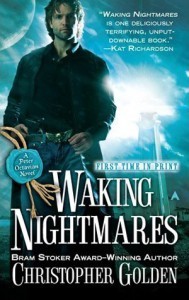
Such moments of discovery are the very finest creative moments I have ever experienced. In my most recent Peter Octavian novel, Waking Nightmares, there are many such moments. A vampire named Charlotte arrived in my story much the same way that Kitsune did in that earlier work, as did references to the growing threat of a sinister creature named Cortez. Those were pleasant discoveries, but as in life, not all discoveries were pleasant. Characters I had expected to live—characters I had plans for, you understand—died. Others were irrevocably changed, including Octavian himself. Future volumes will be decidedly different because of these events—plot turns I didn't see coming until they were upon me.
Anything can happen.
I'm not comparing real life to fiction, mind you. Nothing make-believe will ever make me feel what I felt when I received those two phone calls early last year. But if I can tap into those and other emotions and manage to remind you of your own moments of discovery—large and small, joyful and sorrowful—then maybe I can make you really feel something. That is a writer's greatest reward.
I wish you a lifetime of discovery.
***
Thanks, Chris!
Readers, what creative moments have you discovered via something in your life? How did it change your work or you?
Comment below through Wednesday, August 17, 2011 for a chance to win a copy of Waking Nightmares!
August 4, 2011
Summer of Discovery: Discovery as Gift
 Welcome to this week's guest blogger, Ms. Kat Richardson! I "met" Kat online via a small Buffy group I run, then got to meet her in person at Bouchercon 2008 in Baltimore. I had the awesome luck to be on a panel with her. I remember so clearly when Charlaine Harris recommended Kat's first book, Greywalker. No stranger to Charlaine's recommendations, I pre-ordered it immediately and fell in love with Kat's series.
Welcome to this week's guest blogger, Ms. Kat Richardson! I "met" Kat online via a small Buffy group I run, then got to meet her in person at Bouchercon 2008 in Baltimore. I had the awesome luck to be on a panel with her. I remember so clearly when Charlaine Harris recommended Kat's first book, Greywalker. No stranger to Charlaine's recommendations, I pre-ordered it immediately and fell in love with Kat's series.
Her most recent book, Downpour (book 6), debuted this week to kudos and many greedy fans. I can't wait to read it!
In the meantime, enjoy Kat's post, comment below to win a hardcover copy of Downpour!
***
Discovery! (kat richardson gets out and about)
In the course of writing a series, I have discovered a lot—about myself, about writing, and about what horrible things are going on in my and my characters' heads.
Really, it's a bit scary in there.
No, I mean it.
When a large part of the cast are ghosts, vampires, and monsters, it can be a bit dreadful—gruesome even—to be privy to their thoughts. Which most of the time include a lot of variations on "I think I'll eat you…" and not in a nice way.
I've also discovered that when imagination is given free reign, it is not only the light that comes through, but the darkness, too. That's not bad, when you write something as shadow-ridden as my books. And it makes my dreams so much nicer (since I've given my nightmares away to all of you. Mwahahaha….  )
)
I always get to discover new things in my research and travels. A few years ago I went to London to do research for a book—I'd never been to England and it was fun to go someplace new and explore and still call it "work." This was so much fun I thought I needed to do it again, so last year I went to the Olympic Peninsula to investigate a new area for my heroine, Harper Blaine, to experience.
Even though the Olympic Peninsula is only a few miles away from where I live in Seattle, it's a little hard to get to and slightly isolated due to the shape of Puget Sound. The easiest way across at the top is to take a long ferry ride to the east shore of the peninsula at Kingston and then drive to the west. The trip at night had a strange, haunted quality with the ferry mostly empty and the lights on the black water outside spreading like an inverted sky for the boat to skim across. The roads on the other side were dark and narrow, tree-lined so they felt like tunnels as we drove through them with our headlights illuminating only pieces of the scene, so the trip seemed like a slide show. A view of a building, a bit of road, a cluster of trees, a bend that gives way to split rail fence, looming ahead like a barrier…. and then we turned and went on.
My companion and I had a lovely time wandering around near Lake Crescent—where DOWNPOUR takes place—and finding all sorts of interesting things and gathering bits of history from the historical society there. We also discovered a whole new range of allergens and sneezed a lot, but it was still a ton of fun.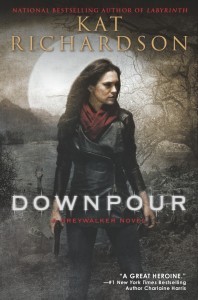
And having discovered so much that was old, but new to us, and interesting, though others thought nothing of it, we came home again armed with stories and details to clothe our imaginations and let our books take on the colors of new places and ideas.
Discovery is a gift, even the less-than-fun parts of it. I love to investigate things, research, play, see, and try new things and places—it's the meat of writing, since discovering something—even something in my own backyard—fires my imagination. And I didn't even have to travel to England this time!
***
Thanks, Kat!
Readers, what things have you investigated that have led to nifty discoveries? Comment below for a chance to win a brand-new hardcover copy of Downpour!
July 28, 2011
Summer of Discovery: Unending passion
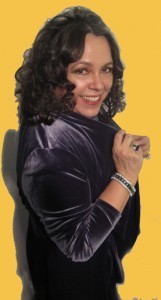 Carole Nelson Douglas ditched a newspaper career to become a full-time fiction writer about fifty novels ago.
Carole Nelson Douglas ditched a newspaper career to become a full-time fiction writer about fifty novels ago.
Talk about double trifectas so far this year: a Career Achievement Award in Mystery from RT Book Reviews in L.A., and Guest of Honor slots at Malice Domestic mystery convention in D.C. and at CONduit science fiction/fantasy convention in Salt Lake City. Cat in a Vegas Gold Vendetta, the 23rd Midnight Louie feline PI mystery, comes out August 2. Late November welcomes the fifth Delilah Street, Paranormal Investigator urban fantasy, Virtual Virgin. And Delilah has a novella, "Monster Mash," in this summer's Chicks Kick Butts anthology.
Carole's titles have appeared on national fantasy, romance and mystery bestseller lists and have won many writing awards. The secret to her long, genre-blending career, she says, is passion and compassion.
Take it away, Carole!
***
People often ask how I've kept a writing career going for so long through so many genres. I didn't have a clue myself until I heard the great American fantasist, Ray Bradbury, speak. I'd written twenty novels by then, but had never analyzed what had driven me to write and keep writing. Bradbury said his secret was he'd never outgrown the subjects that fascinated him as a child: Mars, books, dinosaurs, carnivals.
So what was I passionate about as a young child? Books, yes, and cats, writing and putting on plays, begging hand-me-down clothes for dress up, cats, drawing and making up poems, old movies on TV, the young wife next door's awesome high heels, Hopalong Cassidy's voice on TV, and cats.
My kid lit was Little Women (women's issues), Sherlock Holmes stories (historical mystery), and the T. S. Eliot poems that became the musical CATS (feline PI). I loved Edgar Allen Poe at an alarmingly early age (horror, mystery and suspense), and adored Tolkien's Lord of the Rings later in college (high fantasy, urban fantasy and world-building on a grand scale).
No wonder Cat in a Vegas Gold Vendetta is the 23rd book of my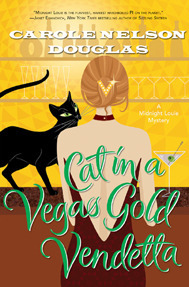 Midnight Louie feline PI series. It's Remington Steele with a romantic quadrangle and a Sam Spade cat. Temple Barr, Louie's partner, is a gutsy and clever vintage clothing fan. Vegas Gold Vendetta's murder mystery involves a dying cat collector and greedy relatives, but also addresses the series' underlying serious issues: domestic and institutional abuse and ethic hatred. Passion and compassion.
Midnight Louie feline PI series. It's Remington Steele with a romantic quadrangle and a Sam Spade cat. Temple Barr, Louie's partner, is a gutsy and clever vintage clothing fan. Vegas Gold Vendetta's murder mystery involves a dying cat collector and greedy relatives, but also addresses the series' underlying serious issues: domestic and institutional abuse and ethic hatred. Passion and compassion.
The compassion had kicked into gear when I was in college and writing my first novel, a Gothic romantic suspense with a female protagonist who did not need to be rescued. I overheard an English couple denigrating the Irish, right in front of the libeled hotel employees. At that moment, my heroine became half-Irish, half-English and my novel gained a social/political issue and a depth of plot and character growth that allowed it to sell to New York even after the Gothic novel craze had died forever.
Twenty-five years later, the year I heard Ray Bradbury speak, because of my annoyance with wimpy women in books, I became the first author to take a woman from the Sherlock Holmes stories as a series protagonist–Irene Adler, the American opera singer and only woman to outwit him. Good Night, Mr. Holmes became a New York Times Notable Book of the Year. (the arts, women's issues, historical dress, mystery and suspense). In fact, I signed a copy and gave it to Bradbury in return for his signed copy of Fahrenheit 451. Talk about a fangirl moment!
Before then, my post-college reporting career focused on . . . you got it, women's issues and the arts of writing, theater, acting, costuming. And I wrote a feature story on a remarkable survivor, a stray black alley cat they called "Midnight Louie." All that reporting drove my fiction writing even more. After the Gothic, I wrote a female swashbuckler historical romance. I wrote bestselling high fantasy. Now, years later, I write bestselling urban fantasy with the Delilah Street, Paranormal Investigator series, which earned two Publisher's Weekly starred reviews.
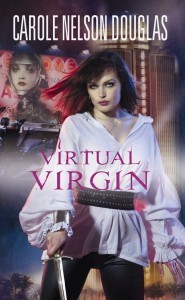 Delilah Street's name comes from where she was found as an abandoned infant, so collecting and wearing vintage clothing from other people's family history fills an orphan's void. She rescues a . . . dog, an Irish wolfhound-wolf cross who becomes the K-9 in their investigative partnership. She's pals with Cinema Simulacrums (CinSims) like Sam Spade and Nick and Nora Charles, black-and-white film noir characters overlaid on zombies to become living, 3-D attractions at Las Vegas 2013 hotels like the Inferno. And in Virtual Virgin, Delilah and her ex-FBI dead-dowsing love, Ric Montoya, go to Mexico to take down the demon drug lords responsible for the deaths of the hundreds of women in Juarez. (horror, women's issues, animal companion, film noir) Passion and compassion.
Delilah Street's name comes from where she was found as an abandoned infant, so collecting and wearing vintage clothing from other people's family history fills an orphan's void. She rescues a . . . dog, an Irish wolfhound-wolf cross who becomes the K-9 in their investigative partnership. She's pals with Cinema Simulacrums (CinSims) like Sam Spade and Nick and Nora Charles, black-and-white film noir characters overlaid on zombies to become living, 3-D attractions at Las Vegas 2013 hotels like the Inferno. And in Virtual Virgin, Delilah and her ex-FBI dead-dowsing love, Ric Montoya, go to Mexico to take down the demon drug lords responsible for the deaths of the hundreds of women in Juarez. (horror, women's issues, animal companion, film noir) Passion and compassion.
In the Chicks Kick Butt story, "Monster Mash," the head 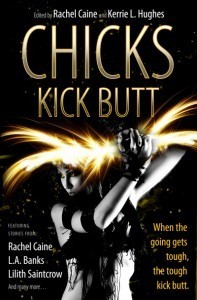 werewolf mobster hires Delilah to evict an unwanted opera-singing CinSim from his hotel. The cheapo has hired Lon Chaney, "man of a thousand faces," as a house CinSim because he'll morph into his many roles, the Phantom of the Opera, a vampire, and Quasimodo, the hunchback of Notre Dame. To solve the haunting, Delilah must duel serial CinSim monsters, but she ends the haunting by uncovering and resolving a horrific Chaney family feud involving Chaney, his wife and their son, who created the Wolf Man role, and who wasn't really Lon Chaney, Jr. Again, passion and compassion.
werewolf mobster hires Delilah to evict an unwanted opera-singing CinSim from his hotel. The cheapo has hired Lon Chaney, "man of a thousand faces," as a house CinSim because he'll morph into his many roles, the Phantom of the Opera, a vampire, and Quasimodo, the hunchback of Notre Dame. To solve the haunting, Delilah must duel serial CinSim monsters, but she ends the haunting by uncovering and resolving a horrific Chaney family feud involving Chaney, his wife and their son, who created the Wolf Man role, and who wasn't really Lon Chaney, Jr. Again, passion and compassion.
Even as I morphed with the publishing industry to try new genres, my lifelong passions took new shapes and showed up to drive new characters and plotlines, never abandoning me or my imagination, because they were the things I did and still do care about, passionately.
Jiminy Cricket advised Pinocchio to "Let your conscience be your guide," but I've always offered newer writers a variation on that: Let your subconscious be your guide. That will ensure you draw on your deeply buried childhood passions and they will never lead you wrong.
I've also realized that, for me, like Pinocchio, conscience must also be my guide. I want my writing and characters and plots to be intriguing, adventuresome, and romantic and fun, but with an underpinning of psychological realism and character growth. That means I must look the evils of my world in the face as well as portray the hopes we all have.
***
Thanks, Carole!!
July 21, 2011
Summer of Discovery: Things Best Left Undisturbed
A hearty welcome to Ms. Dana Cameron, a partner in several crimes (just ask her sometime about the Monterey Aquarium visit).
***
 Hi, I'm Dana Cameron, and right now, I'm up to my hip-boots in urban fantasy and colonial noir short stories! My second Fangborn short story, "Swing Shift," combines werewolves, jazz, and spies in World War II, and was nominated for an Agatha, an Anthony, and a Macavity. For a limited time, you can read it at my website. A third Fangborn story, "Love Knot," features vampire Dr. Claudia Steuben and appears in The Wild Side: Urban Fantasy with an Erotic Edge (August 2011). The adventures of 18th-century tavern owner Anna Hoyt continue in "Disarming" and "Ardent." Enjoy!
Hi, I'm Dana Cameron, and right now, I'm up to my hip-boots in urban fantasy and colonial noir short stories! My second Fangborn short story, "Swing Shift," combines werewolves, jazz, and spies in World War II, and was nominated for an Agatha, an Anthony, and a Macavity. For a limited time, you can read it at my website. A third Fangborn story, "Love Knot," features vampire Dr. Claudia Steuben and appears in The Wild Side: Urban Fantasy with an Erotic Edge (August 2011). The adventures of 18th-century tavern owner Anna Hoyt continue in "Disarming" and "Ardent." Enjoy!
—
One of my favorite lectures to present involves the cliches about archaeologists in popular culture. In addition to explaining "Why Archaeologists Are Middle-Aged German or English Men" (and how some of us are cute girls from Nawtha Boston) and "Why Archaeologists Always Dig Up Mummies and Golden Treasures" (and how we really don't), I like to discuss why, in movies, comics, television, books, and any other fictional venue you can name, archaeologists are always uncovering "Things Best Left Undisturbed."
From H. P. Lovecraft and Rider Haggard, to Dr. Who and Star Trek, to the Marvel Universe and Buffy the Vampire Slayer, there are story lines featuring archaeologists who are warned not to disturb the spirit of X, the tomb of Y, or the sacred treasure of Z, and then promptly do, with dire consequences. Inevitably, fictional archaeologists and explorers open tombs, piece together clues that were separated for good reason, and awake long dead terrors. Why is this such a constant theme? Why do people worry we'll uncover ("dis-cover") something dangerous?
It's because we do.
We don't ignore the public records, but we dig for what else was going on behind the scenes. We're interested in the everyday stuff that doesn't make it into the history books, but both the quotidian and the exceptional are often connected to complicated and unhappy parts of the past, filled with exploitation or ignorance or violence. Many people will talk about leaving the past buried, and that's exactly the opposite of what archaeologists do. Archaeologists uncover information, and sometimes even discover the truth. And then we talk about it.
Same as writers.
I discovered this same reticence to delve into hard topics when I started writing fiction. I realized that when the critics in my head were the loudest, when I had the strongest urges to leave my desk and clean the bathroom or go to the gym, or when I kept skipping over one scene, it was usually because it was difficult in some way. It was fraught with emotion of some kind, but almost always the scary, the sad, or the deeply, embarrassingly personal. It was something I would go a long way to avoid in real life.
More importantly, I also discovered those urges to stop writing were almost always indications that I was on to something good, something that would really feed the story I was trying to tell.
(Seriously? In order to write fiction, I need to uncover thoughts and feelings Best Left Undisturbed? That's just great.)
I'm not writing autobiography when I write fiction, not even when the character is an archaeologist. But for a story to work, it's got to have either emotional or physical danger. It has to feel real, so is has to come from somewhere, so writers, me included, mine their own experiences, strip away the details, and refine the sensation.
(No one who's gone into that cave has ever come out again…Oh, that part of the cemetery haunted…Danger, danger, Will Robinson…)
Some recent examples: In "Disarming,"* 18th-century tavern-keeper Anna Hoyt is sent to London to undermine a powerful man. I drew on memories of painful homesickness and cultural alienation to show her response to leaving home for the first time—and doesn't everyone love remembering how they didn't fit in? The payoff I didn't expect was that by doing so, I gave her the reasons to make the huge choice she has at the end.
memories of painful homesickness and cultural alienation to show her response to leaving home for the first time—and doesn't everyone love remembering how they didn't fit in? The payoff I didn't expect was that by doing so, I gave her the reasons to make the huge choice she has at the end.
"Ardent"** continues with Anna's voyage home, where she must chose between the life of her first love and the new life she's found for herself. It's no fun revisiting choices that have changed your life, but in doing so, I realized Anna would turn some of her anger on those forcing her to make those decisions.
"Love Knot" appears in the anthology The Wild Side: Urban Fantasy With An Erotic Edge*** and features my Fangborn character, vampire Claudia Steuben. Claudia's worked hard to keep her considerable powers in control, but when she encounters an artifact that rewards her actions with sexual pleasure, she must decide…okay, I'm going to stop there. That book doesn't come out for another couple of weeks, so you'll just have to wait to find out what happens.
 My point is: You don't get anywhere by covering something up. Discovery leads to understanding. So take a deep breath, ignore the rumors and warnings of the locals, and forge on. Visiting your own feelings might be like unleashing demons, but you may get what you need to fuel a story.
My point is: You don't get anywhere by covering something up. Discovery leads to understanding. So take a deep breath, ignore the rumors and warnings of the locals, and forge on. Visiting your own feelings might be like unleashing demons, but you may get what you need to fuel a story.
—
* You can check out the podcast of Disarming, from Ellery Queen Mystery Magazine (June 2011).
** In Cape Cod Noir, Akashic, 2011.
*** Edited by Mark Van Name, it's available August 2; I'll give away a copy to a lucky reader of Maria's choosing!
***
Thanks, Dana!
Readers, tell us a tale of how you've forged ahead, uncovering something interesting. Commenters will all be entered for a chance to win a copy of The Wild Side: Urban Fantasy With An Erotic Edge.
July 14, 2011
Summer of Discovery: Discovering My Dark Side
Welcome to Elaine Viets, longtime friend and truly wonderful person!
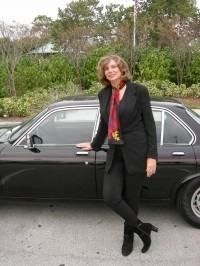 Elaine Viets writes two national bestselling mystery series. In her tenth Dead-End Job mystery, "Pumped for Murder," Helen Hawthorne investigates extreme bodybuilding and a death from South Florida's cocaine cowboy days.
Elaine Viets writes two national bestselling mystery series. In her tenth Dead-End Job mystery, "Pumped for Murder," Helen Hawthorne investigates extreme bodybuilding and a death from South Florida's cocaine cowboy days.
Elaine's second series features St. Louis mystery shopper Josie Marcus. "An Uplifting Murder" is the sixth book. Elaine has won the Agatha, Anthony and Lefty Awards and has been praised in the New York Times. She blogs for The Lipstick Chronicles and the Femmes Fatales.
*****
I write two mystery series. Funny mysteries. My books are beach reads – entertainment that makes you laugh. One reviewer called me "the queen of cozy humor" for my new Dead-End Job mystery, "Pumped for Murder."
Both my series heroines work hard to bring justice to the victims they encounter. Helen Hawthorne tracks down killers in the Dead-End Job mysteries, set in South Florida. Josie Marcus, a mystery shopper, solves the mysteries she encounters in St. Louis. These women take murder seriously, but have a light-hearted view of life. 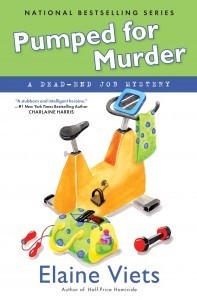
The reviewer didn't know about my dark side. I write dark, brooding short stories. These stories are often told by the killer.
My venture into the dark side started with "Wedding Knife," a story about a woman forced to wear an ugly bridesmaid's dress. Nearly every woman would sympathize with her plight. Readers agreed. That story won an Agatha and an Anthony Award. My dark side was hungry for more.
I fed it with "Red Meat." This time the narrator was a man. I'd never written from a man's point of view – another discovery. This man was a killer on Death Row. He had it coming.
While my protagonists Helen and Josie tripped over bodies and solved murders for 16 novels, I relished my dark role. One of my latest short stories is "The Bedroom Door" in the Mystery Writers of America's anthology "Crimes by Moonlight," edited by vampire queen Charlaine Harris.
Through the "The Bedroom Door" I entered the world of the paranormal. This story was based on my grandmother Frances Vierling, who had second sight. Grandma believed that dead family members stopped by her bedroom to say good-bye before they left on their final journey.
I expanded the fictional grandmother's psychic powers. Once again, I reveled in the voice of the guilty narrator – a jealous wife with a hair-trigger temper.
In each short story, I explore the depths of my dark side a little more.
I haven't gone all the way. Not yet. I've never written a full-length novel. I may get there yet, but right now, the path remains . . . dark.
***
Thanks, Elaine!! I'm honored to have been a fellow Agatha nominee the same year "Wedding Knife" won! How about you, readers? Have you in either reading or writing started to explore a darker side?
Comment below no later than Wednesday, July 20, 2011 for a chance to win an MP3-CD of "Crimes by Moonlight," edited by Charlaine Harris, with short stories by Charlaine, Carolyn Hart, Margaret Maron, Dana Cameron and 15 more mystery writers! Drawing will be on Thursday.
July 5, 2011
Summer of Discovery: Filker Tom Smith
 A huge welcome to one of my new favorite writers, Jim C. Hines.
A huge welcome to one of my new favorite writers, Jim C. Hines.
When he's not writing the most awesome Princess series books or Goblin books, Jim writes a blog where he discusses everything from rape culture to health care plus the humorous side of being a writer. He's also got a Zazzle store where he sells items with his fun cartoons.
***
It was the middle of 2007, and my second book Goblin Hero had just come out. The book opened with "The Song of Jig," a goblin-style tune which described the adventures of Jig the goblin from the first book with about as much accuracy as your typical history text.
I wanted to post an MP3 of the song online to help promote the book, but there were two problems:
1. I didn't have the sound equipment to do a good job.
2. My singing voice is about as appealing as gravel in a dryer.
So a friend recommended I talk to a Michigan filker named Tom Smith.
Now I had been doing the convention scene for several years as an author, but I had never paid much attention to the filk track. But I e-mailed Tom, and he wrote back. He seemed like a pretty nice guy, and gave me a few possibilities for recording my goblin tune. We planned to meet up at ConText later that year.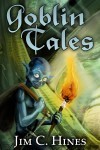
The con arrived, and one of the first things I did was circle Tom's concert on the schedule. If this guy was going to sing my song, I wanted to make sure … well, that he didn't suck. Concert time arrived. I snuck in early to get a good seat and waited for the show to start.
He did not suck. I'd say Tom was the complete opposite of sucking, except then I'd be saying he blew, which isn't right either.
Tom had a good voice, and was quick and skilled on the guitar, but what made the concert truly awesome was the love in his songs. This was geek culture put to music by someone who obviously loved it. Who loved the culture, the people, and the music.
Did I mention he was funny, too? Crossing Winnie the Pooh with Cthulhu to the tune of Return to Pooh Corner? Or his song 307 Ale ("a beer brewed in a tesseract")? And as a former computer tech, I could totally related to "Tech Support for Dad."
Other songs could make you cry, like his tribute to Jim Henson, "A Boy and his Frog." And he wrapped up his concerts with "Rocket Ride," a high-energy tribute to everything we love about pulp science fiction.
It opened up a whole new aspect of fandom and convention life. These days I consider Tom a friend, one of the nicest people I've met since getting into fandom. Oh, and that MP3 for Jig the goblin? We eventually met up in the hallway. He took one look at the lyrics, pulled out his guitar and microphone, and recorded it right there on the spot. You can listen to it here (link is to an MP3 file).
 Or head over to Tom's site and sample some of his stuff. Tell him Jim sent you.
Or head over to Tom's site and sample some of his stuff. Tell him Jim sent you.
You're welcome.
***
Isn't it fun? I remember running across filkers back in the day (oh, 30 years ago or so) when I was busy helping out with the Dallas Fantasy Fair. I have very little musical talent, but love to listen and love the clever word play.
How about you? Do you have a favorite filker or songwriter that you love?
Comment below to win your choice of any of Jim's DAW paperbacks.
Find Jim online at:
Livejournal
Fictionwise
Wikipedia
Goodreads
June 30, 2011
Summer of Discovery: A Musical Mystery Tour
Welcome to this week's guest, Lillian Stewart Carl. I've known Lillian for eons–first, when I was living in the DFW area and attending/working at local SF/F cons, then via Malice Domestic, an east coast mystery con. Most recently, Lillian and I have shared a publisher: Wildside Press.
For a Scots-descended redhead with a newt-like complexion and an affinity for the thud and blunder of British history, Lillian came late to Celtic music. She's been doing her best to rectify her tardiness by imagining a soundtrack for her cross-genre (but mostly suspense) novels.
* * *
Many years ago, on one of our trips to Scotland, my family and I visited Culzean ("Cull-ane") castle in Ayrshire. The gardens soon became the setting of an early scene in Dust to Dust. Even sooner, though—as in, when we returned to the hotel—I realized that the album I'd bought in the gift shop was missing.
I dug through the suitcases I'd packed for our trip home. I phoned the castle. Nada.
Still, we stopped by on our way to the airport the next morning. The people in the shop were very nice but couldn't help…. Until, out of the mirk and mist, appeared a young man who was the doppelganger of Michael Campbell, the hero of Ashes to Ashes and Dust to Dust. He handed over the damp but undamaged album, announced, "'Twas in the carrr parrrk," and vanished.
That album is, appropriately enough, Scottish folk/rock group Runrig's Discovery. Story of my musical life.
When I was very young, my mother signed me up for ballet classes—only to learn that despite being born with a love of music, I'd also been born with two left feet, a condition only remedied when I recently discovered tai chi.
Music classes came next, and, since we didn't have a piano, I found myself playing a small piano accordion. This enterprise was a success—I had two left feet, but all ten fingers—and I soon graduated to an adult-sized instrument, so much larger and heavier I might as well have been wearing pleated body armor.
For years I played pieces such as "Fascination" and "Beer Barrel Polka", nothing that really, well, sang to me. For even more years the accordion sat in a back closet. At last I donated it to the Salvation Army. Whether it made a joyful noise for them, or was sold in a thrift shop, I have no idea—but someone got a beautiful instrument.
Only then did a friend give us his Steeleye Span albums. The music of the British folk/rock group opened up new worlds, and led me to the albums sold by a dealer-friend at science fiction conventions—British and Celtic folk/rock groups like Runrig, Battlefield Band, Silly Wizard, Wolfestone, Clannad, and more.
When we started attending the Texas Scottish Festival, I discovered more music, ranging from hard rock flavored with Celtica to traditional ballads—Seven Nations, The Killdares, Jiggernaut, Beyond the Pale, Clandestine, Ed Miller, John Taylor, and Brian McNeill.
Some of these musicians played accordions. Accordions could make compelling music. Who knew? And now that I knew, was it too late?
Thanks to Enya and Riverdance and all, Celtic music is no longer obscure. When Howard Shore wrote his magnificent score for The Lord of the Rings, he based many passages on Celtic melodies. The haunting qualities of that soundtrack are worthy of the source material, my favorite book of all time.
Three decades ago we bought a piano. For way too long I did no more than parse bits of classical music—nothing like pounding out the Mozart "Rondo alla Turca". But I usually played only the right hand. The left hand on the accordion is played on buttons, so I couldn't equate the written music with the left side of the piano keyboard
Then I discovered that there were books of the music from The Lord of the Rings—and lo and behold, I play the piano with both hands! From Middle-earth to Middle C….
I've never written a character who plays the accordion or the piano, unless you count the haunted piano in Blackness Tower. But my characters and I definitely hear the music. For example, in Shadows in Scarlet the couple falls in love while an accordion plays "The Misty Mountains of Home". (Isle of Lewis native Alyth McCormack once sang this at a Chieftains concert, making the hair on the back of my neck tingle. If they ever make a movie of The Blue Hackle, she's the banshee.)
The abovementioned Michael Campbell plays the bagpipes. So does Mick Dewar in Lucifer's Crown. There's nothing as evocative, not to mention assertive, as a well-tempered set of pipes.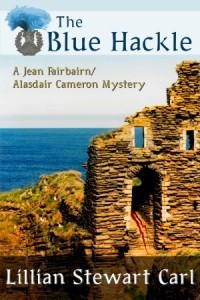
They, however, are amateurs. My professional-musician character is Hugh Munro in the Fairbairn/Cameron series. Hugh is a thinly-disguised version of the also abovementioned Brian McNeill, a founder of my early favorite, Battlefield Band. He's a Scottish storyteller, singer, songwriter, novelist, and player of fiddle, guitar, mandolin, concertina and more—but not the small Scottish harp or clarsach, never mind Hugh doing so in the novels.
Brian keeps telling me I should kill Hugh off in some horrible fashion, and I keep refusing. I need my literary soundtrack. Who knows what musical discoveries I have yet to make?
* * *
Lillian Stewart Carl has published multiple novels and multiple short stories in multiple genres, all of them striking at least a glancing blow at history and myth. Her latest novels are the Jean Fairbairn/Alasdair Cameron mystery series: America's exile and Scotland's finest on the trail of all-too-living legends.
***
Lillian, thanks for that wonderful musical tour! I The Charm Stone, book number four in the Fairbairn/Cameron series, that takes place in Colonial Williamsburg.
June 23, 2011
Summer of Discovery: Just Say Yes
 Welcome to Ellen Byerrum, a former Washington, D.C., news reporter, and a playwright. Ellen also holds a Virginia private investigator's registration. Her Crime of Fashion mysteries star Lacey Smithsonian, a reluctant fashion reporter in Washington D.C., "The City Fashion Forgot."
Welcome to Ellen Byerrum, a former Washington, D.C., news reporter, and a playwright. Ellen also holds a Virginia private investigator's registration. Her Crime of Fashion mysteries star Lacey Smithsonian, a reluctant fashion reporter in Washington D.C., "The City Fashion Forgot."
The latest book in the series, Shot Through Velvet, takes Lacey on assignment to the last velvet factory in Virginia on its final day of operation. Her story takes a turn when a blue body is pulled out of the dye tank. A starred review in Publisher's Weekly said it provides a "serious look at the decline of the U.S. textile and newspaper industries and provides much food for thought."
If you like cozy mysteries with an edge and great characters, you'll love her series.
***
Sometimes a simple "yes" will lead to a surprising discovery., taking you away from your comfortable little box and into another world. It's led me to stories and story ideas over and over again. All you have to do is be a little curious, say yes, and you're off.
One of my more vivid discoveries happened years ago at my first reporting job in a place I call Sagebrush. (Not its real name.) Walking down the sidewalk, a local real estate agent drove up to me, rolled down his window and yelled, "Hey, there's a massage parlor in town! You want to go see it?"
Now, this was a time when "massage parlor" did not mean a spa package with a pedicure and New Age music playing in the background. This massage parlor didn't cater to a female clientele. But the county had nothing in their rules that outlawed this new business, so it came to pass that a massage parlor crew from the red light district in Denver moved to Sagebrush to a house on a county road.
There was a padlock on the door so the real estate guy and I had to crawl through the window. Not sure what the deal with the lock was, but we all had to crawl up and over, and through the window: the girls, the clients, real estate guys, and me. Once inside, I interviewed the "manager" and the masseuses. They were happy for the publicity. I discovered that customers could order off a menu of services. The client could order one masseuse or two and determine what they wore or didn't wear. No pedicures, manicures, or facials. I left with a front-page story. And a job offer. They assured me I'd make a lot more money than working for the newspaper. I declined, preferring the poverty of a journalist, but we sold out of every copy of the paper that day.
They were later busted for prostitution, another story I was able to write.
A fellow reporter always complained that I got the good stories. But she stuck to her school board beat and high school sports and she tended not to say yes to random people on the street with story ideas.
There are always new discoveries every time I write a book. My latest book, Shot Through Velvet, developed after I toured the last velvet factory in Virginia. It opened up a whole new world to me. A world of exquisite fabric, dangerous equipment and desperate people out of work.
My next book took me back to Sagebrush.
Although I said I would never do it, I returned to Sagebrush to research Death on Heels, (to be published next February). I used that dusty Western city as the place where my sleuth, fashion reporter Lacey Smithsonian, earned her spurs as a reporter. It's not at all like Washington, D.C., where she usually hangs out. 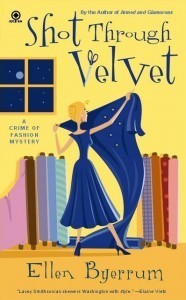
There were no massage parlors this time. And in fact the town has changed and improved. There are no parks and pools and some greenery. But I was on the trail of an old cowboy line camp outside of Sagebrush. I was lucky enough to find one broken down log cabin, a line camp where cowboys would stay while working with the cattle. It was in the wilderness, framed by clay colored bluffs. I made a lot of discoveries on that trip, including:
A legendary cowboy, who I interviewed years ago, spoke with me again, and gave me a marvelous motive for murder.
The highway signs around Sagebrush are still shot full of bullet holes.
A lone wild horse patrolling the line camp, was as curious about us as we were about him. Never getting close enough to touch, but never out of sight. The inquisitive fellow followed us for a mile or more to the gate of the public land that we crossed.
On the gate were the skeletal remains of a grinning coyote, perhaps a warning to other coyotes.
I am allergic to Sagebrush.
Yes, most of these things may make it into my next book. Except the allergy business. I could have cobbled together the story and fictitious town of Sagebrush for Death on Heels from my memories, but it would be nearly as vivid, and hopefully as true. Although I once swore I would never go back, I'm glad I did. I'm glad I said yes to more hands-on research.
Thank you, Maria, for letting me to guest blog today. It's an honor.
***
Thanks, Ellen! Love the story about Sagebrush. Readers, tell us about a time you said "yes" and had an adventure…even if it was a lot less adventuresome than Ellen's. A random commenter will will a copy of Shot Through Velvet.



